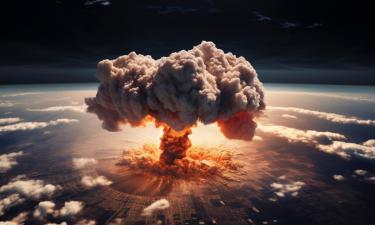Scientists to create ice-free cryogenic technology to preserve frozen human mummies for centuries
Diseases such as cancer and AIDS are virtually incurable today. Yet doctors should be capable of curing these fatal diseases in a hundred years. It would be great to fall asleep and wake up when a wonder drug can be bought over the counter.

Back in the 1940s, researchers first came up with a concept of cryogenic storage of the terminally ill. However, the experiments with animals failed to produce the intended effect. The warm-blooded would die at temperatures below 18 degrees.
However, some brave people prefer a tub of liquid nitrogen to a grave at a cemetery. Several dozen people have been buried by means of a cryogenic technology in the United States. A “cryogenic burial” will cost you from $30 thousand to $150 thousand.
However, the frozen ones have no chance of coming back to life because water in the body will turn into the sharp-edged crystals of ice when frozen. The ice crystals will cause irreparable damage to the tissues. Therefore, it is essential that no ice be produced during the freezing.
A team of Russian scientists have been trying to apply the above key requisite to developing an effective cryogenic and resuscitation technology since the early 1990s. The team was originally headed by Academician V. Kovanov, a member of the Russian Academy of the Medical Sciences. The Russian scientists achieved a considerable degree of success. The temperature of a lab rat was brought to 0 degrees after freezing the rat in an ice-cold stream of water and then warming it up slowly. The animal did not die in the process.
Creating an ice-free cryogenic technique was much more difficult part of the job. Special substances called cryoprotectors are required. Scientists devised about 300 cryoprotectors in the 1930s. Alas, the quantity never transformed into the quality. The cryoprotectors can only stop the formation of ice in individual cells e.g. blood, liver, semen or small pieces of tissue yet it can not fill up evenly the entire body. Some areas of the body remain unaffected.
The above research team split up in 1994 following the death of Academician Kovanov. It was not until years later that Pavel Scherbakov, a heat engineer of the Kovanov team, managed to unite the former colleagues into a new team.
The professor of the department of operating surgery and topographic anatomy of the Sechenov Moscow Medical Academy V. Telpukhov along with the engineer P. Scherbakov pioneered the use of a mixture of inert gases in lieu of cryoprotectors. The mixture comprised argon, krypton, and xenon. Once frozen, the gases turn into a jellylike mass, which binds water without forming sharp-edged ice crystals. An experimental rat was frozen in an atmosphere of inert gases at minus 196 degrees. The rat was then thawed up to 0 degrees. The rat’s heart was eventually transplanted to another rat. The heart resumed beating. The experiment was performed for 10 times.
The scientists patented their method of organs and tissues cryoconservation at the Russian State Register of Inventions in January 2006.
Freezing humans and storing them in a cryogenic environment is the ultimate goal of the program. The immediate task concerns the building of a bank of organs and tissues capable of saving lives endangered by grave diseases and accidents.
However, the question remains: Why not resuscitate the entire rat provided that its heart started beating again after a spell in liquid nitrogen?
According to Pavel Scherbakov, the inert gases bubbles have been the biggest setback so far. The bubbles fill the rat’s blood vessels as temperatures rise to 0 degrees and higher. The body produces more gases if helium is added into a mixture of gases. The problem needs resolving via selection of a gas mixture components, pressure and heating speed.
However, investing in the program involves certain risks since the freezing of a human body is against the law in Europe. U.S. and Russian authorities may impose a similar ban at any moment. In case the legal obstacles are somehow removed, researchers will be able to carry out a complete anabiosis of a mammal in the nearest future.
Translated by Guerman Grachev
Arguments and Facts
Discuss this article on Pravda.Ru English Forum
Subscribe to Pravda.Ru Telegram channel, Facebook, RSS!





